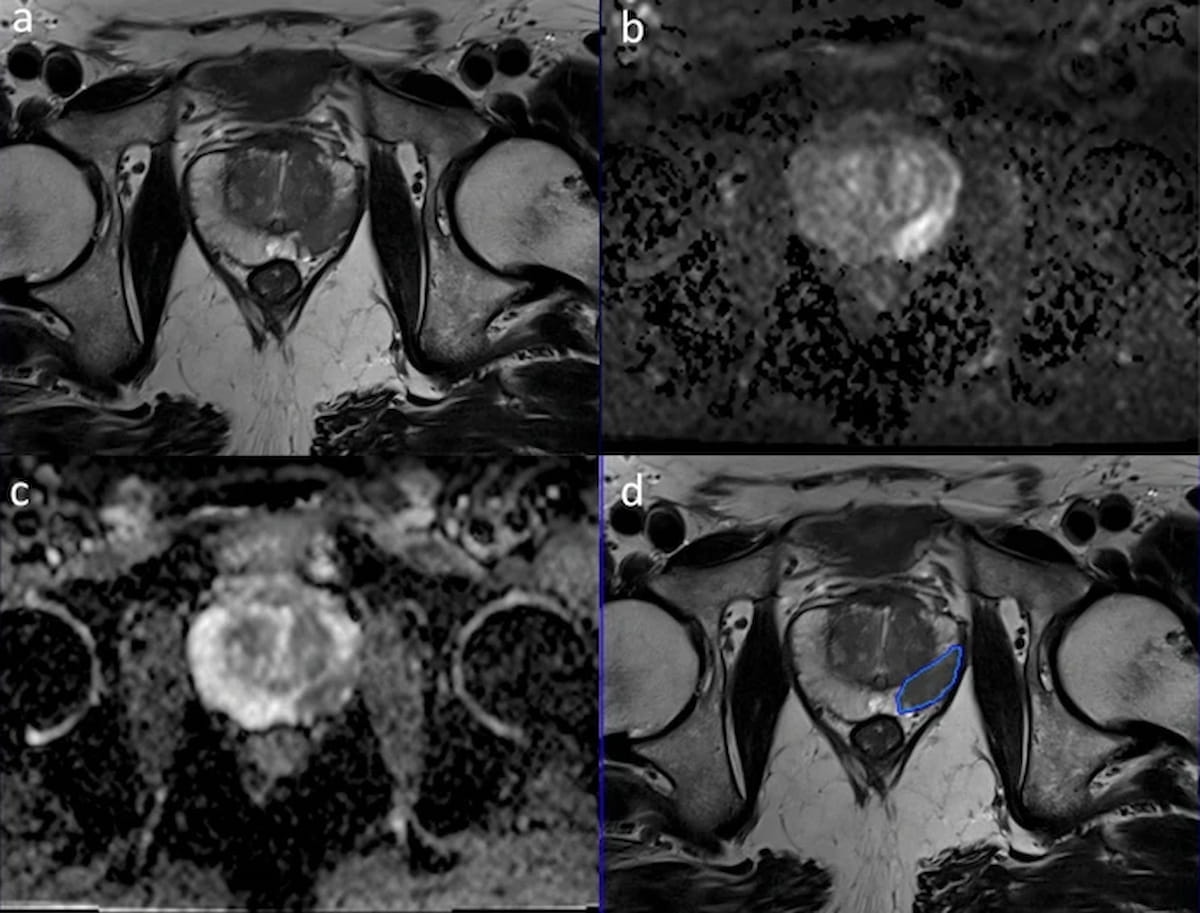Deep Learning Network Shows Significant Potential for Prostate Cancer Detection on MRI
In multiple datasets from a study involving reviewed data from over 2,700 bi-parametric magnetic resonance imaging (MRI) scans, a deep neural network demonstrated area under the receiver operating characteristic (AUROC) scores ranging from 87 to 89 percent for the detection of clinically significant prostate cancer.
While acknowledging the work behind the updated Prostate Imaging-Reporting and Data System (PI-RADS) Version 2.1 to facilitate improved standards for prostate magnetic resonance imaging (MRI), researchers have cited noteworthy false-positive and false-negative results as well as significant inter-reader differences.1,2
However, an emerging deep neural network model may offer a consistently high level of detection for clinically significant prostate cancer (csPCa) on bi-parametric MRI scans.
For the study, recently reported in Insights into Imaging, the researchers reviewed a total of 2,736 bi-parametric MRI scans that included 1,500 images from publicly available multicenter and multi-vendor training database, 1,036 in-house multicenter scans, and 200 scans from a transfer learning dataset.3 The study authors trained and developed a self-adapting deep neural network (3D nnU-Net) with data from the aforementioned public database (Prostate Imaging: Cancer AI (PI-CAI)).
According to the study, the researchers subsequently assessed the 3D nnU-Net model’s ability to detect csPCa on bi-parametric MRI scans from the in-house dataset and the in-house transfer learning dataset as well as hidden validation and testing sample images from the PI-CAI dataset.
For the PI-CAI hidden validation and testing datasets, the researchers noted area under the receiver operating characteristic curves (AUROCs) of 88.8 percent and 88.9 percent respectively. For the bi-parametric MRIs from the in-house and transfer learning datasets, the 3D nnU-Net model provided AUROCs of 88.6 percent and 87 percent respectively, according to the study.3
In a patient with clinically significant prostate cancer, the deep learning model (3D nnU-Net) correctly predicted and established the borders for a prostate cancer lesion. (Images courtesy of Insights into Imaging.)

“The model was externally validated on our large-scale multicenter and multi-vendor in-house data, which provided a similar performance in detecting csPCa at the scan level, showing its robustness and generalizability. … Notably, the performance of our model was much higher than the reported median AUC of 0.79 in identifying csPCa in earlier studies,” wrote study co-author Ercan Karaarslan, M.D., who is affiliated with the Department of Radiology at the School of Medicine at Acibadem Mehmet Ali Aydinlar University in Istanbul, Turkey, and colleagues.3,4
(Editor’s note: For related content, see “Study Shows Benefits of AI for Prostate Cancer Detection on Multiparametric MRI” and “Can Explainable AI Enhance Diagnosis and PI-RADS Classification ofProstate Cancer on MRI?”)
In regard to study limitations, the authors acknowledged that only cases of clinically significant prostate cancer (csPCa) that were visible on MRI were utilized, and contrast-enhanced sequences were omitted. They conceded a lack of histopathology results for patients without csPCa. The researchers also did not compare deep learning assessment of prostate MRI to radiologist assessment.
References
1. Turkbey B, Rosenkrantz AB, Haider MA, et al. Prostate imaging reporting and data system version 2.1: 2019 update of prostate imaging reporting and data system version 2. Eur Urol. 2019;76(3):340-351.
2. Smith CP, Harmon SA, Barrett T, et al. Intra- and interreader reproducibility of PI-RADSv2: a multireader study. J Magn Reson Imaging. 2019;49(6):1694-1703.
3. Karagoz A, Alis D, Seker ME, et al. Anatomically guided self-adapting deep neural network for clinically significant prostate cancer detection on bi-parametric MRI: a multi-center study. Insights Imaging. 2023;14(1):110. doi:10.1186/s13244-023-01439-0.
4. Castillo TJM, Arif M, Niessen WJ, et al. Automated classification of significant prostate cancer on MRI: a systematic review on the performance of machine learning applications. Cancers (Basel). 2020;12:1606.
Expanded FDA Approval Allows Use of Pluvicto Prior to Chemotherapy in Patients with mCRPC
March 28th 2025Recent research demonstrated a 59 percent reduced risk of progression or death with the radioligand therapy Pluvicto in comparison to a change of androgen receptor pathway inhibitor (ARPI) for patients with metastatic castration-resistant prostate cancer (mCRPC).
Study: Monitoring of Prostate MRI Exams Could Lead to 75 Percent Reduction of Gadolinium Contrast
March 17th 2025While DCE MRI was deemed helpful in over 67 percent of cases in which it was used, researchers found that monitored prostate MRI exams, which facilitated a 75 percent reduction of DCE MRI sequences, had comparable sensitivity for prostate cancer as non-monitored exams.
Meta-Analysis Shows No Difference Between bpMRI and mpMRI in Ruling Out csPCa
March 6th 2025In an 18-study meta-analysis involving over 4,600 patients, researchers found that bpMRI and mpMRI had equivalent pooled negative predictive value (NPV) of 92 percent for clinically significant prostate cancer (csPCa).